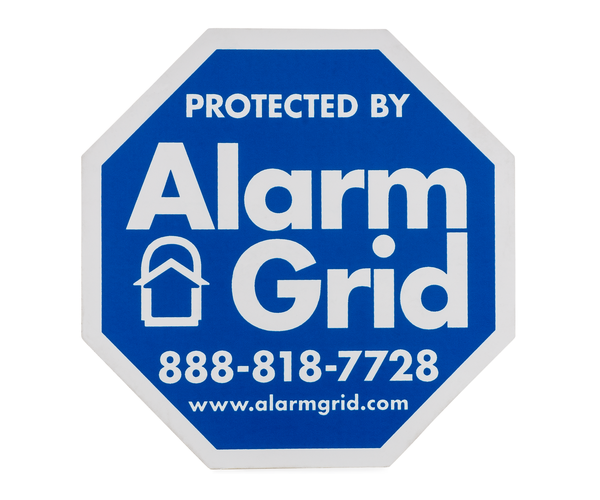The Alarm Grid Video Team has sure had an interesting past few weeks. It all came to head at the start of last week when they uploaded a backlog of seven (7) new videos. No new videos were uploaded after that, so we're rolling with those 7 for this recap. We hope you like the videos!
But where it gets unusual is the fact that four (4) of the new videos featured myself. I don't usually roll up my sleeves and appear in videos, as I don't have quite the star-power of Jorge or the young lad Jarrett. But I was happy to help out. The four videos I appeared in covered the DSC PG9944 Outdoor Image Sensor, which is a great product for anyone with a Qolsys IQ Panel 2 Plus System.
Don't worry - you will still get to enjoy one (1) new video from Jorge and two (2) new videos from that guy wearing the silly Batman jacket. But in all seriousness, we hope you enjoy the new videos and find them helpful in using your security system. Anyway, no more babbling, let's get on with the video recap for the week of February 3rd!

Tilt Sensor That Is Compatible with the Qolsys IQ Panel 2
Jarrett wears a Batman jacket as he explains which tilt sensors are compatible with the Qolsys IQ Panel 2 System. A tilt sensor is typically used for monitoring a garage door and letting the system know when it is opened or closed. The original Qolsys IQ Panel 2 System uses 319.5 MHz tilt sensors like the Qolsys IQ Tilt-S. If you have an IQ Panel 2 Plus, then you should choose a 319.5 MHz, 345 MHz, or 433 MHz wireless tilt sensor based on the version of the system you have. Unfortunately, there is not yet a PowerG Tilt Sensor.
Honeywell Lyric Alarm System vs Tuxedo Touch Keypad
A nice and polite young man named Jarrett covers the differences between the Honeywell Lyric Alarm System and the Honeywell Tuxedo Touch Touchscreen Keypad. These are two completely different devices with totally different functions. The Lyric is a standalone wireless alarm panel, while the Tuxedo is a keypad for a Honeywell VISTA System. You cannot use the Tuxedo Touch as a keypad for a Lyric System. If you are wanting a dedicated keypad for your Lyric System, then you should check out the Honeywell LKP500.
Communicators That Are Compatible With the Interlogix Simon XTi-5i
Jorge covers the alarm monitoring communicators that are used with the Interlogix Simon XTi-5i Security System. The Simon XTi-5i needs a cellular communicator to work with the Alarm.com platform. There are plenty of communicator options for the Interlogix Simon XTi-5i System. But the most notable ones are those from the Alarm.com XT-511 lineup. These include the Alarm.com XT-511-US-AT (AT&T LTE), the Alarm.com XT-511-US-VZ (Verizon LTE), the Alarm.com XT-511-CA-TL (Telus LTE), the Alarm.com XT-511-US-DP-AT (AT&T LTE & IP), and the Alarm.com XT-511-US-DP-VZ (Verizon LTE & IP)
Does the PG9944 Take Pictures or Videos?
I explain that the DSC PG9944 Outdoor Image Sensor takes pictures, not videos. An image sensor is basically a still-motion camera combined with a motion detection sensor. They are great alternatives to security cameras. When the PG9944 triggers an alarm on the system, it will begin capturing images. Ten (10) images are taken and sent to the panel. If you have an IQ Panel 2 Plus, you can view these 10 images as a stop-motion video. Additionally, the first of these images will be forwarded to Alarm.com for remote viewing. But the PG9944 has no way of capturing video.
Enrolling the DSC PG9944 w/ the Qolsys IQ Panel 2 Plus
I show you how to enroll the DSC PG9944 with the Qolsys IQ Panel 2 Plus. All versions of the Qolsys IQ Panel 2 Plus are capable of supporting PowerG Sensors like the PG9944. The sensor is enrolled by putting the IQ Panel 2 Plus into its enrollment mode and then activating the enrollment function on the sensor to learn it in. The enrollment button can be a little difficult to reach with batteries installed, so you will likely need to use a thin object like a screwdriver to press and hold the button.
Viewing the Images Captured By the PG9944 On the Qolsys IQ Panel 2 Plus
I show you how to view images taken by the PG9944 on the Qolsys IQ Panel 2 Plus. The IQ Panel 2 Plus has a Camera Menu where you can see images taken by the system and any enrolled PowerG Image Sensors. This menu is easily accessed by swiping right or left from the main system screen until you reach the appropriate section. The PG9944 takes ten (10) images when it causes a system alarm, and it sends these images to the IQ Panel 2 Plus for local viewing. The images are viewable as a stop-motion video.
Using the PG9944 Outdoors
I explain how the DSC PG9944 is suitable for use in an outdoor environment. The sensor is able to withstand various environmental conditions that are expected to occur outdoors, including rain, wind, dust, heavy sunlight, and extreme temperatures. However, the PG9944 should not be submerged in water at any time. If you are looking for a PowerG Image Sensor to use exclusively indoors, then you might consider the DSC PG9934P instead. The DSC PG9934P is not suitable for use outdoors, but it is smaller and less expensive than the PG9944.




